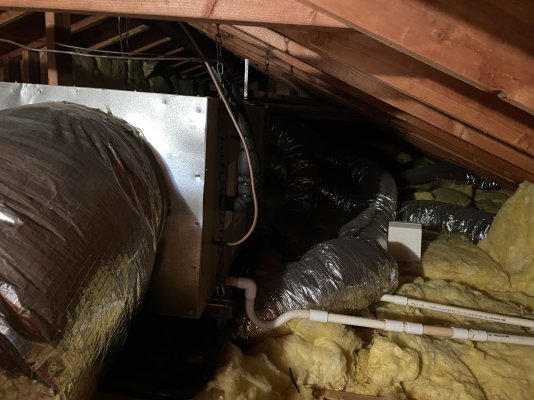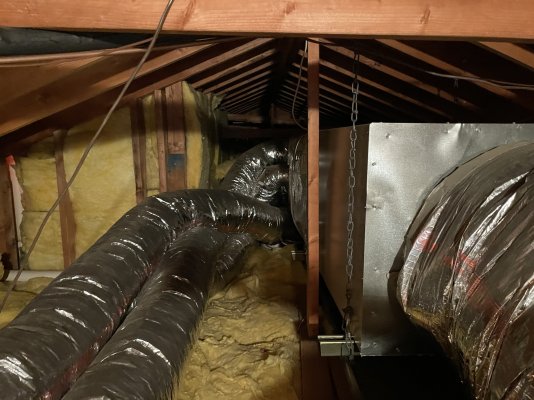Ncc1701
Recycles dryer sheets
Hi All!
Rather than calling an HVAC guy I want to see if I can perform annual maintenance on my home AC system myself. I have a pretty standard AC system, it is completely separate from the heating system which is baseboard heat.
So I pretty much got the outdoor condenser unit squared away, I removed the dirt from the fins and lubricated the fan etc. etc. My question is really about the indoor evaporator unit. The evaporator is in my attic (see pictures) and I'm not sure even where to begin servicing this thing. Not only is it sealed tight but I'm scared to go near it because if I apply pressure to the sheetrock underneath, I'm going to go right thru the ceiling!
Is servicing the evaporator even necessary? Any suggestions would be appreciated....thanks!
Rather than calling an HVAC guy I want to see if I can perform annual maintenance on my home AC system myself. I have a pretty standard AC system, it is completely separate from the heating system which is baseboard heat.
So I pretty much got the outdoor condenser unit squared away, I removed the dirt from the fins and lubricated the fan etc. etc. My question is really about the indoor evaporator unit. The evaporator is in my attic (see pictures) and I'm not sure even where to begin servicing this thing. Not only is it sealed tight but I'm scared to go near it because if I apply pressure to the sheetrock underneath, I'm going to go right thru the ceiling!
Is servicing the evaporator even necessary? Any suggestions would be appreciated....thanks!
Attachments
Last edited:




